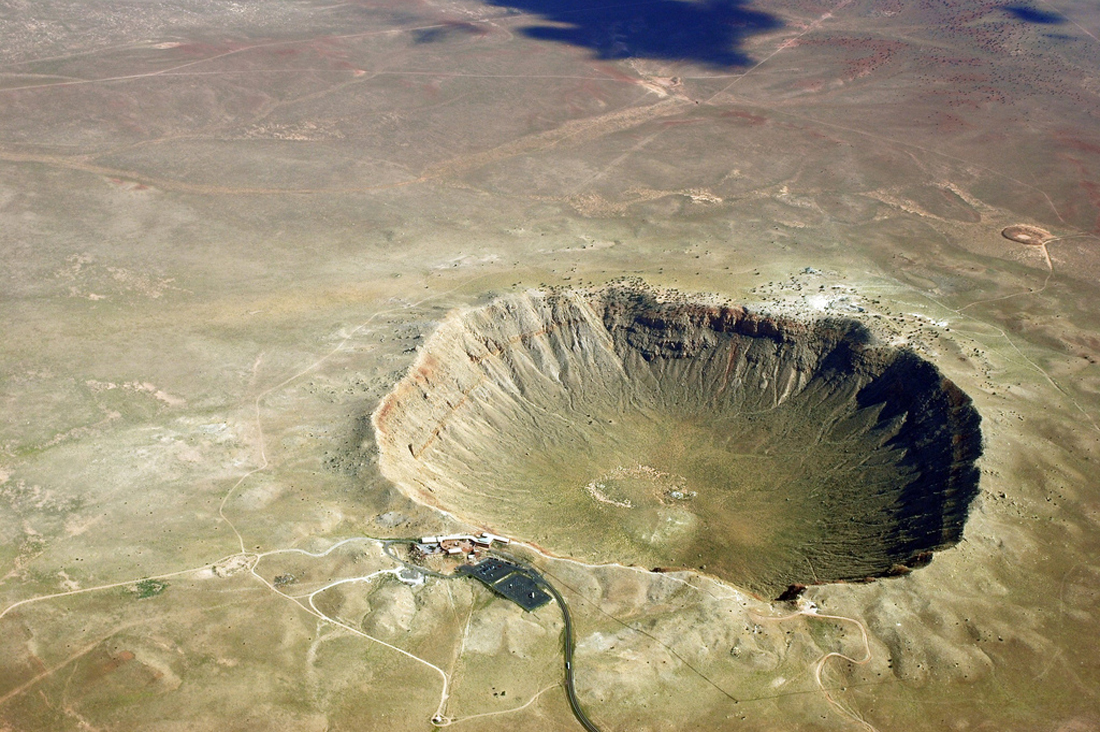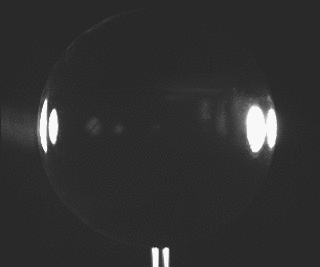Cosmic catastrophes can be even more catastrophic.

A well-known picture of the death of dinosaurs from the fall of a large asteroid or comet on Earth, in the area of the Yucatan Peninsula, in Central America (it is not the photo). The explosion, tsunami, fires and other delights of global catastrophe, which Hollywood loves so much. What they say much less often, it’s about the fact that at about the same geological time, on the opposite side of the Earth a catastrophic volcanic eruption begins.
This eruption had a power incompatible with the explosions of the historical epoch. If a "usual" eruption gives rise to a volcano or a small island, then an eruption 65 million years ago gave rise to a whole plateau, which now occupies about a third of the Indian subcontinent - Dekanskoe .

')
Geological dating is always conditional, so "at about the same time" can be interpreted as ± 1 million years. And geologists are not in a hurry to link these two events: a strike from space and an eruption from the back of the planet. It is usually said that the dinosaurs were killed not by the asteroid itself, but by the climate changes that were caused by the fall and the eruption.
UPD. In the comments in LiveJournal they pointed out that, nevertheless, the Deccan traps began to erupt before the asteroid fell on the other side of the Earth.
Examples of communication of heavy space collisions and powerful eruptions can be found not only at the time of the death of dinosaurs, and not only on Earth. And recently, the first experimental evidence appeared.
To begin with about examples.
Today, the largest confirmed asteroid crater - called astrobleme - on Earth is African Vredefort . Its diameter is about 300 km and it can even be viewed on Google maps.

So, the object diametrically opposed to Vredefort on the surface of the Earth is a chain of volcanoes of the Hawaiian Islands.

There still needs a slight digression to the theory of volcanology. Today there are two reasons for the formation of volcanoes: subduction and the mantle plume.
Subduction is a meeting of tectonic plates. They heat up due to friction and the molten stone seeks out to the surface. Thus, for example, volcanoes of the Pacific Ring of Fire are formed: in Indonesia, the Philippines, Japan, the Kuriles, and Kamchatka.

The second reason: the so-called. "mantle plume" or "hot spot". By this term is meant a hot jet of mantle substance that breaks up almost from the very core of the planet. At the same time, the jet hits from one point, and if the continental plates of the earth's crust move above it, then a whole chain of volcanoes is formed, differing from each other in their age. Thus, at one time, Hawaii became evidence of continental drift. I have met with studies, according to which a similar chain of volcanoes was once in Karelia, but almost wiped off the face of the Earth after a long time ago. Only Girvas was left. The truth is now there are hypotheses that the hot spot itself can also “travel”, then the Vredefort / Hawaii opposition turns out to be accidental.
Mars supervolcanoes, unsurpassed in the entire solar system, arose just above the hot spots. By the time of their formation, there was no movement of continents on Mars, so the hot spots found only one way out, and a multi-kilometer stratovolcano was forming.

It is on Mars that one can find the most convincing hypotheses of the occurrence of hot spots, in the place opposite to the asteroid impact.
The most obvious example is the Farsid volcanic highland, which is directly opposite to the largest astrobleme of the Solar System - the Hellas Valley. The diameter of Hellas is about 2.5 thousand km, depth is 9 km. It is possible that this large-scale strike was also involved in the formation of the Valley of Mariner, which is adjacent to the Farsid.
Another notable crater / volcano pair is the Argir Valley, which is contrasted to the Elysian volcanic highland. There, too: the second largest crater of Mars, and the second largest highland, although it is substantially less than Hellas.

All of the above are well-known, in principle, facts that many have noticed, but no one could draw a rigorous mathematical rationale for them. Therefore, the connection between large astrobleb and mantle plumes is still a conjecture that has not received convincing scientific arguments.
Only recently appeared additional facts in favor of the hypothesis. American scientists conducted a simulation of the impact of a small, but fast body, on a larger one.

At the NASA Ames Vertical Gun Range stand, the glass pellet was dispersed to a speed of about 7 km / s (10 times faster than a bullet, but 2 times slower than an average asteroid). The pellet hit a clear acrylic sphere, and scientists studied the damage.
In general, this study dealt with the physics of the formation of the Vetoid planetoid, so scientists limited themselves to a uniform ball. The planet will be much more complicated by the device - for reliable modeling it is necessary to add a core and a crust. But even in a plastic ball, with a powerful blow, there is a noticeable violation of the structure in the opposite part of the impact site. Even despite the fact that the pellet flew at an angle of 47 degrees (the direction indicated by the arrow).

Large size .
Further digital modeling allowed us to obtain a mathematical model of the impact, most consistent with the experimental results.

It seems that a powerful blow to the sphere forms a dynamic response zone on the reverse side. The shock wave radiating from the crater converges in the opposite part of the planet. There, pressure rises, which can heat up the mantle substance, and it rushes up, breaking through the volcano.
Thus, it turns out that the danger of a large body falling from space can lead to much more serious consequences than a single badabum. On the other hand, if the hypothesis is correct, then you can relax a bit in anticipation of the catastrophic eruptions of the Yellowstone Caldera and the like. If nothing speedy and massive comes from the other side, then the danger of the destruction of human civilization is reduced. The main thing is to look around and not miss the next guest from space.
Source: https://habr.com/ru/post/365049/
All Articles